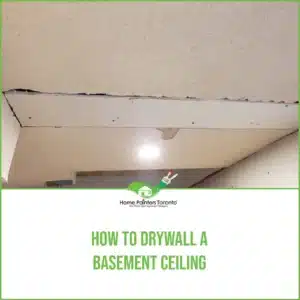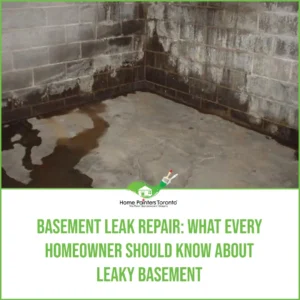
If you live in the GTA, chances are that you have experienced a flooded basement at least once. Toronto and the GTA are often prone to a heavy rainy season in the spring and summer months. Flooded basements can cause serious damage to your property and belongings, as well as pose a health risk to those living in them.
We want you to be ready for the next big storm in Toronto and the GTA. So before you get yourself all worked up over a flooded basement, here are some tips on how to prevent basement flooding during heavy rain.
- The first is to make sure that you have the proper drainage system in place outside of your home. This will help with water runoff so that it doesn’t get into your basement.
- You should also make sure that any gutters or downspouts are clear of debris so they can properly drain rainwater away from your property.
- The best way to prevent basement flooding during heavy rain is to have a sump pump installed. A sump pump is an electric device that pumps water out of your basement, preventing it from flooding.
- You can also install a backwater valve that stops sewer water from backing up into your home during heavy rainstorms.
- You should also fix any leaks in your plumbing system, including leaks in toilets, sinks and showers. The more water that you can keep out of your basement, the less likely it will flood during a heavy rainstorm.
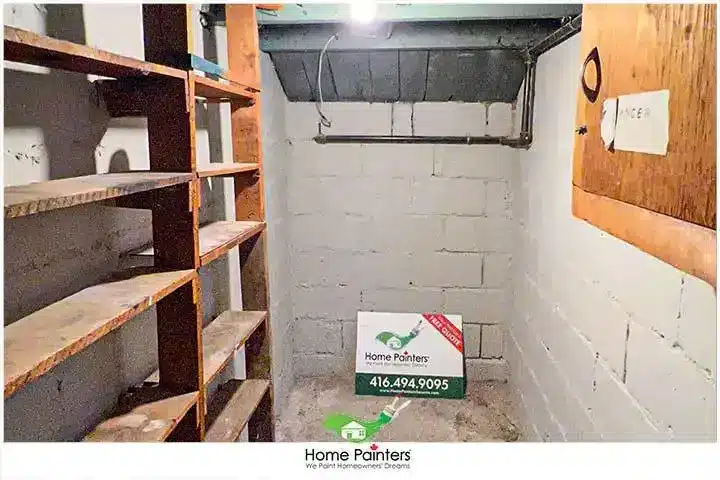
Unfortunately, with that comes excess water getting into your home. This can cause drywall damage to the flooring as well. Not to worry, though, because all can be fixed when you have some knowledge and expertise about flooded basement repair.
Drywall Installation & Repair
These Are Some Steps You Can Take to Repair and Paint Your Flooded Basement:
Step 1: Eliminate the Moisture From Flooded Basement Repair
- Extract all the water as soon as possible. This prevents further damage from occurring. Mops, clothes, dehumidifiers, and wet vacs will all come in handy.
- Clear out all the basement furniture or other items that came in contact with water.
- Try to remove the moisture that has been absorbed by the wood, plaster, and other materials.
- Wash out mud, dirt, or debris as soon as possible. Use a hose and mop, cloth, or sponge.
Step 2: Carefully inspect the damage to your Basement
- See what can be fixed and what needs to be removed and replaced. Leaving damp drywall in place can lead to mould and structural problems.
- Sagged, blistering, and peeling areas will require specific attention.
- Make sure any damage to the basement structure has been repaired before trying to repair the drywall over it. Breaks in the plumbing or cracks in the foundation all need to be fixed, or bigger problems will pop up.
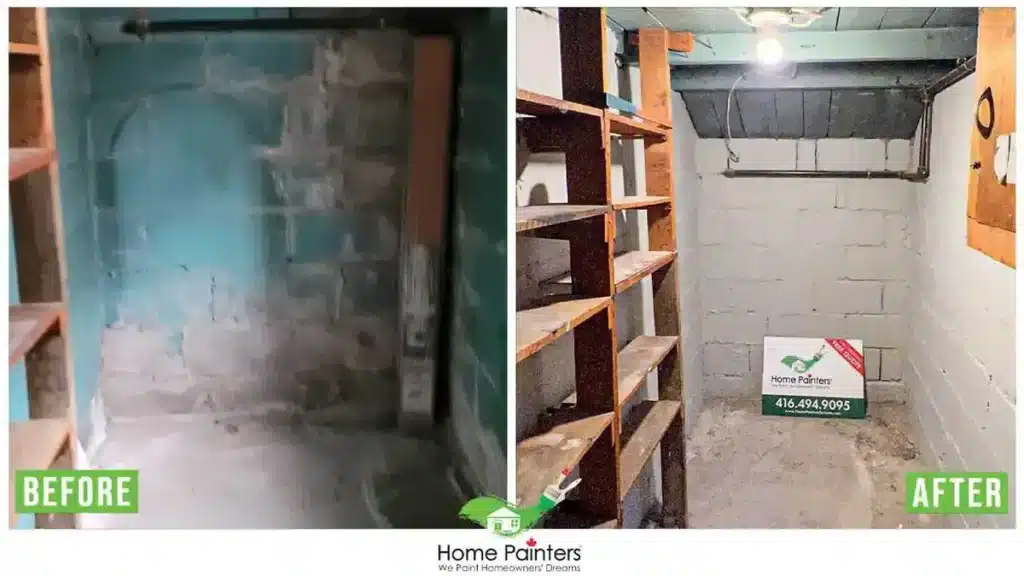
Step 3: Replace, Clean Up & Flooded Basement Repair
- Check out our other articles on repairing drywall, and if you don’t feel comfortable doing it yourself, get a friend to help you, or hire a drywall repair professional to take care of it.
- To repair water-damaged drywall, examine the affected area carefully to make sure that it is still attached to the studs.
- If necessary, reattach the loose basement drywall with drywall screws. Try to work from the edge inwards.
- Any damaged drywall has to be cut out. Use a replacement piece cut to match the area that has been damaged. Newly installed drywall should be puttied and sanded smoothly to match the surrounding wall in the basement.
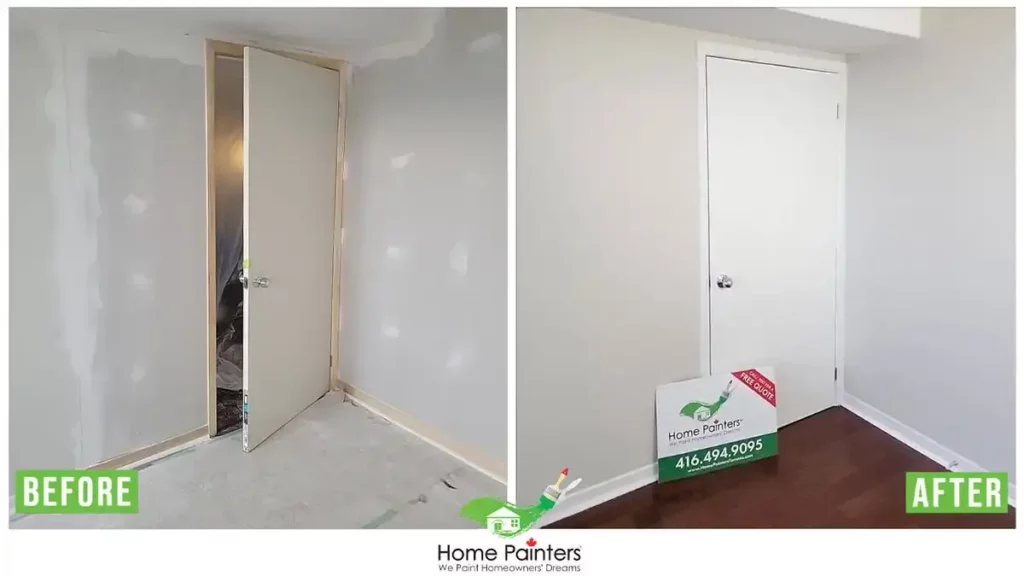
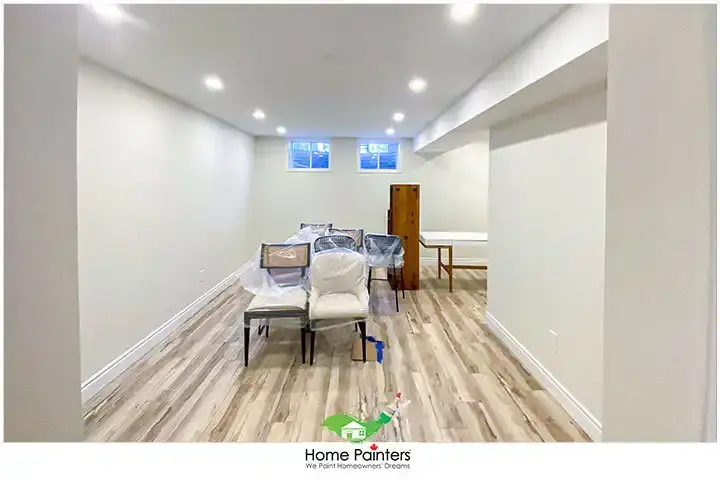
Step 4: Finishing Touches on Your Basement Drywall
- You can use two coats of oil primer. Most interior painting today is done with latex-based paint because of its short drying time and low odour.
- Unfortunately, when dealing with water damage and flooded basement drywall, you can use oil and let it dry completely between coats. This seals any dampness left by the water residue. It also prevents stains from being visible.
- Use a putty knife and compound to fill and patch any holes that became visible after priming. You can apply this straight over the primer.
- Sand the compound until it is smooth, then blend it with the rest of the wall.
- Apply another coat of primer and make sure it is dry. Now, you can paint over the primer as you wish.
How Do You Deodorize a Basement After A Flood?
If you have just had a flood in your basement, chances are that there is a strong smell of mildew and mould. Here are some tips for deodorizing a flooded basement:
- Remove excess water by using fans or dehumidifiers.
- Use an odour neutralizer like baking soda or vinegar so that the smell doesn’t linger.
- If there is mould growing on any surfaces, remove it with bleach or another cleaning product before applying these solutions.
- Open all windows and doors and leave them open for at least 24 hours to air out the place. This will also prevent mould from growing on wet surfaces.
- Use an air purifier to remove any lingering odours.
- If the odour is still overwhelming after all of these steps, contact a professional basement flooding clean-up service to help remove any remaining moisture. And deal with any mould that may be growing.
What About Fresh Interior Paint Colours After the Repairs?
⇒ Now that you’ve fixed up your flooded basement and executed the drywall repair, it’s time for some interior painting in your basement! That’s the fun part, right? When you pick just the right basement paint colours, it can really help to create a cozy atmosphere.
⇒ So, now is your chance to really make your mark. If you didn’t love the interior paint colour you had done there prior to the flood, take the opportunity to perk up your basement space. If you’re interested in checking out some of the interior paint colour trends for 2021, check out this blog here. Remember, if you have fun with it, you’ll never want to leave your newly renovated basement!
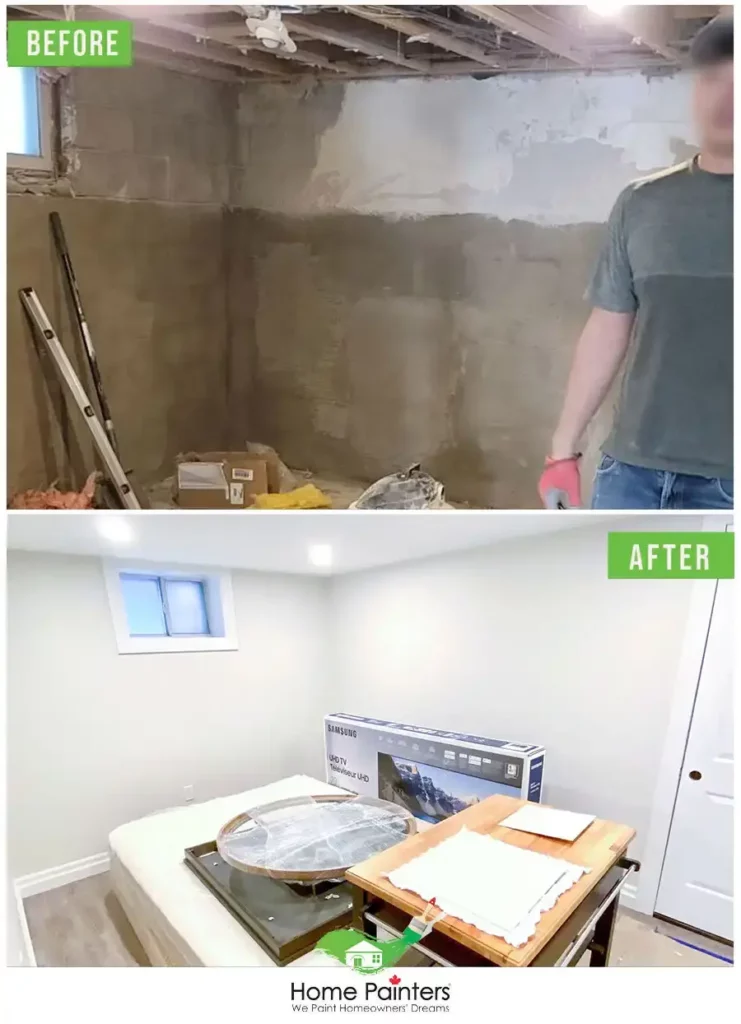
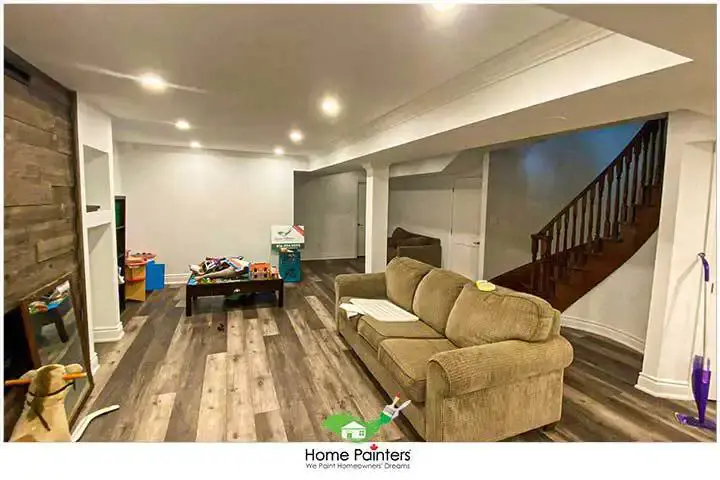
More Interesting Blogs Related to
“FLOODED BASEMENT, DRYWALL REPAIR AND PAINTING”
Don’t you have it in you to deal with your flooded basement? If the work involved in repairing or doing home interior painting sounds like it involves too much time and energy to do yourself, let our interior painters handle everything! Call us at 416.494.9095 or email [email protected] for a FREE quote. And don’t forget to check us out on our social media channels below!



